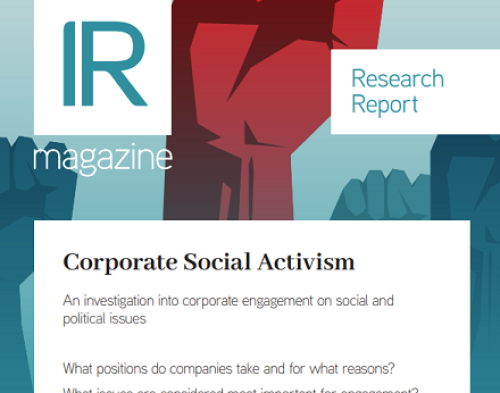The number of virtual shareholder meetings (VSMs) ballooned this year because of the obvious necessity presented by the Covid-19 pandemic. More than 80 percent of the companies hosting VSMs this year did so for the first time.
Although there is always some concern with new technology when it is first used, there are reasons to believe that issuers and shareholders saw significant advantages to holding their meetings online – and that many are not going back to in-person meetings.
One of the biggest advantages is an increase in engagement. Attendance at online meetings overall was three times greater this year than last and surpassed anything typically seen at in-person meetings. Attendees stayed longer, voted more often and asked more questions than they did at last year’s VSMs. Investors often submitted questions ahead of time, giving companies insight into how to make their meetings more informative with in-depth discussion of important questions raised.
Each VSM is unique, and the way companies and their shareholders use them depends on the meeting agenda. This is seen, among those VSMs Broadridge facilitated, in a comparison between the 193 meetings with shareholder proposals and the 1,301 meetings without a shareholder proposal in the first half of 2020.
Those VSMs involving shareholder proposals had an average attendance of 146 people, lasted an average of 34 minutes (nearly twice as long as meetings without shareholder proposals) and had an average of 14 shareholders casting ‘live’ votes during the meeting. Shareholders asked an average of 19 questions at VSMs involving shareholder proposals and some of these VSMs had more than 1,000 participants logging in. These VSMs were more likely to provide shareholders with the opportunity to submit questions in advance.
By comparison, VSMs involving shareholder proposals during calendar year 2019 had an average attendance of 68, ran for an average of 31 minutes and entailed shareholders asking an average of eight questions.
Meetings without shareholder proposals are more ‘routine’ and as a result were used differently. They drew on average 37 attendees and lasted 18 minutes, saw two live votes and involved two questions from shareholders, with fewer choosing to submit questions in advance.
Greater convenience is another appeal of virtual meetings. Holding meetings online makes it easier for a greater number of investors to attend, and it reduces the inconvenience of travel conflicts. The Wall Street Journal recently cited one investor who said he had attended roughly 30 meetings remotely this year, compared with 10 in all of last year.
In its official blog earlier this year, the National Association of Corporate Directors recommended moving shareholder meetings online this year and referred to Broadridge’s guidance about best practices for holding them virtually. Glass Lewis suggests companies conducting virtual meetings in the future make robust disclosures about the process to their shareholders.
There are other reasons why more companies and shareholders will choose to hold their annual meetings online. Technology provides greater flexibility: there’s no one-size-fits-all approach to conducting shareholder meetings online and companies can structure the events to meet their needs, as well as those of their shareholders. Although there was particular urgency around arranging meetings this year, companies have been successfully convening their shareholders in a virtual setting for many years and services continue to evolve, making it easier to participate and vote and to manage the format and conduct of meetings.
Finally, there are cost-saving advantages to investors and issuers in reducing the amount of business travel and trimming the expenses of holding even the simplest in-person meetings.
Room for growth
The broad adoption of VSMs since the start of 2020 suggests there is room for greater adoption of the practice in the future. Broadridge facilitated 1,494 VSMs in the first half of this year, compared with 326 for all of last year.
Although this year’s growth is historic, the trend before the pandemic was already toward online meetings. The number of companies hosting annual meetings through Broadridge had grown at a 17.5 percent annual rate over the previous two years as the service gained momentum among issuers and shareholders.
The benefits of virtual meetings raise the question of why anyone would return to the old way of conducting meetings. Former Microsoft CEO and chair Bill Gates has suggested the increasing use of digital formats in the future because he expects the cultural and behavioral changes that have occurred as a result of Covid-19 to remain. The necessity of adopting the format could lead to its more widespread acceptance, legally and socially, in the future, while also spurring innovations and improvements, Gates said in an interview broadcast by LinkedIn.
‘I doubt there will be many face-to-face shareholder meetings, now that everybody’s got permission,’ he remarked. ‘In some ways, you can create something that’s more efficient and better than what was there before.’
The use of VSMs has also come to reflect corporate governance standards that are on par with in-person meetings. A 2019 study by the Harvard Law School Forum on Corporate Governance reported comparable governance standards between Russell 3000 companies using both formats, with similar dissent levels on important voting matters.
Broader engagement between issuers and shareholders, combined with cost savings and the potential for innovation with the format suggest VSMs will become a standard part of the landscape. For 2021 the technology will continue to improve and allow much more shareholder interaction. The question will be how fast issuers get comfortable with that continued transformation.
Dorothy Flynn is president of corporate issuer solutions at Broadridge










